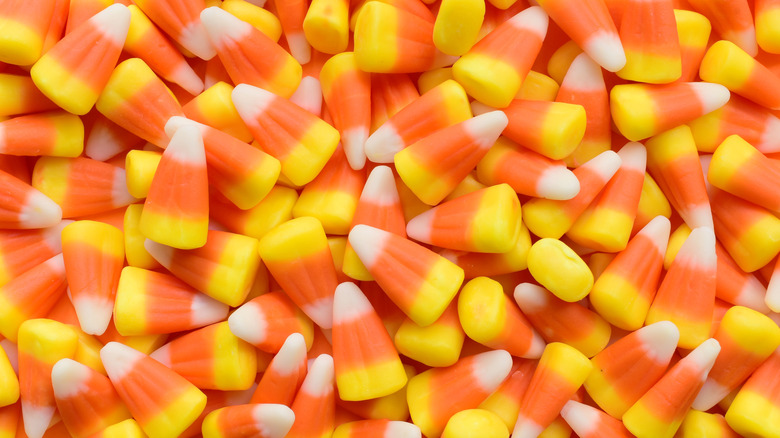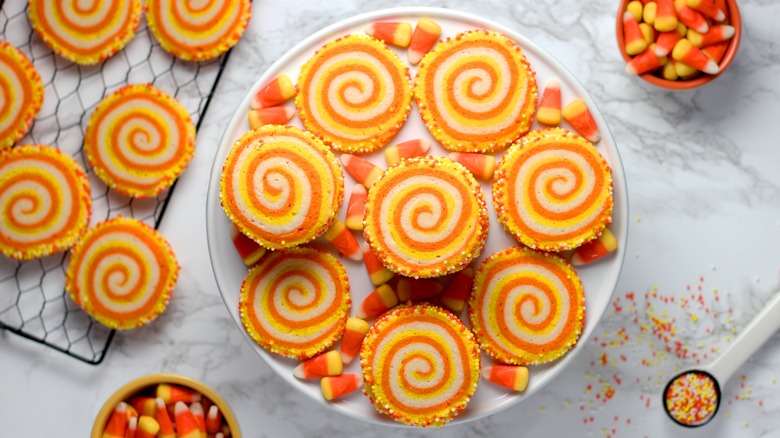The Historic Origins Of Candy Corn
Halloween evolved from the Celtic celebration Samhain, where bonfires were lit to help spirits reach the otherworld, and amateur performers sang songs in exchange for cake (via History). The occasion was adopted into the Christian All Saints' Day, also known as All Hallows Day, and All Hallows Eve was celebrated the night before with songs, prayers, and treats offered in remembrance of the dead.
According to CNN, immigrants helped bring associated traditions to America, carving potatoes and turnips with faces in the hopes of scaring off malevolent forces. However, it wasn't until the 1950s that candy began to characterize the Halloween holiday, notes The Atlantic, and advertisements helped usher in the mass-purchasing of sugary treats. With its harvest-appropriate shape and autumnal colors, candy corn was easily accepted as a seasonal symbol.
Food Network notes it can take up to five days to make a piece of candy corn. Trays with over 1,300 triangular molds are layered with the three colors, which are later polished in pans and shined by edible wax and glaze. Before machines, candy corn was produced by hand in large kettles; sugar, corn syrup, fondant, and marshmallow were melted into a mix that resulted in a textured mouthfeel and poured into trays cut with the corn shape (via Always a Treat). Colors were layered one at a time, and finished candies were distributed by wagons.
Candy made for the people
Candy corn dates back to the 1880s when candy maker George Renninger set out to make treats that resembled food fed to chickens (via CNN). At this time, nearly half of Americans were farmers, and the concept of eating something that looked like animal feed was novel. Manufacturers were focused on mellow creme candies at the time, cranking out shapes of pumpkins, chestnuts, and turnips; Renninger's creation was the first to sell confectionery made of sugar and corn syrup, and the Goelitz Candy Company helped market the product to a wider audience (per History). By the early 20th century, candy corn was known as "penny candy," a type of treat that could be purchased cheaply.
Today, candy corn has invaded other categories, according to Vox: snacks, desserts, candles, bark, and even an ale made by a brewery in Wisconsin. The original flavor has also seen modifications, as peppermint, pumpkin spice, red velvet cake, fruit punch, hot dog, hamburger, and even green beans variations have graced candy aisles (via Always a Treat). History estimates over 35 million pounds of candy corn are sold each year. Love it or hate it, candy corn has staying power.

